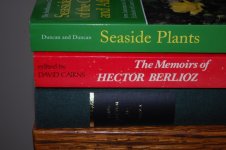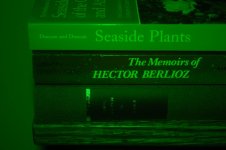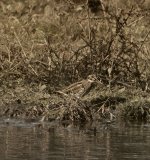I've been trying to figure out for quite a why I prefer one pairs of binos under one set of conditions and different one in another. Probably obvious to many here but differences in transmission curves or colour balance appear to provide a big chunk of the answer. Just wondered if anyone else thought it was a good idea to be offered a totally neutral transmission pair and filter sets to modify the profile. Not an original idea I know, but it seems to have gone out of fashion. I've only found a few astro or marine pairs where it's currently offered.
At a basic level it's not uncommon for marine or 'tropical' pairs to have a lowish blue transmission, surveillance pairs to have a very strong peak in the green and for birding pairs to have a slight red bias (and sometimes a slight dip in the green). At least to my eyes these all provide a positive colour contrast balance (or sometimes contrast) benefit when used under appropriate conditions and are counterproductive under others. Some would see a totally flat 100% transmission as a technical ideal, I don't see it as a satisfactory solution on it's own. We've seen some pretty vigorous debates about perceived difference in models and brands. User tunable seems a reasonable way to go.
While my own bino collection is very humble but I've now spent quite a bit of time trying a variety of alphas trying to figure out which would suites me best (if I had the money). The answer appears to be.... that depends on the season, weather and time of day. So even the relatively small differences amongst the top brands I seem to register quite differently according to light conditions. Perhaps the most interesting result was that, at the weather extremes, the answer was sometimes none of them, a cheepie did a better job in emphasising contrast.
So would filters be the answer? I've not seen transmission curves for any of my pairs of binos, but at least to my eyes, I have a Bushnell with a slight red bias, a Pentax that appears to have green dip and a Chinese porro with a strong green bias. While far from ideal, using a swatch of theatre lighting filters from Lee Filters allows a fairly crude way of refining the view. I've found it's possible to substantially 'correct' the colour balance to somewhere close to neutral, and even enhance the colour contrast to close to my own preferences.
This lunchtime, the Pentax view seems 'neutralised' by filter 278 and enhanced by 159. The Chinese porro neutralised by 003 and enhanced by 279. Today I liked the Bushnell colour contrast as it is but the view is neutralised by 218. Under different conditions I've made different selections. You can look up the colours and spectra here.
http://www.leefilters.com/lighting/
As a foot note. In light of the ongoing debate over on the Nikon forum I do know the difference between contrast and colour contrast. My personal position is I am happy to use any distortion in the transmitted colour spectrum that helps me to distinguish birds from their surroundings.
Any opinions?
David
At a basic level it's not uncommon for marine or 'tropical' pairs to have a lowish blue transmission, surveillance pairs to have a very strong peak in the green and for birding pairs to have a slight red bias (and sometimes a slight dip in the green). At least to my eyes these all provide a positive colour contrast balance (or sometimes contrast) benefit when used under appropriate conditions and are counterproductive under others. Some would see a totally flat 100% transmission as a technical ideal, I don't see it as a satisfactory solution on it's own. We've seen some pretty vigorous debates about perceived difference in models and brands. User tunable seems a reasonable way to go.
While my own bino collection is very humble but I've now spent quite a bit of time trying a variety of alphas trying to figure out which would suites me best (if I had the money). The answer appears to be.... that depends on the season, weather and time of day. So even the relatively small differences amongst the top brands I seem to register quite differently according to light conditions. Perhaps the most interesting result was that, at the weather extremes, the answer was sometimes none of them, a cheepie did a better job in emphasising contrast.
So would filters be the answer? I've not seen transmission curves for any of my pairs of binos, but at least to my eyes, I have a Bushnell with a slight red bias, a Pentax that appears to have green dip and a Chinese porro with a strong green bias. While far from ideal, using a swatch of theatre lighting filters from Lee Filters allows a fairly crude way of refining the view. I've found it's possible to substantially 'correct' the colour balance to somewhere close to neutral, and even enhance the colour contrast to close to my own preferences.
This lunchtime, the Pentax view seems 'neutralised' by filter 278 and enhanced by 159. The Chinese porro neutralised by 003 and enhanced by 279. Today I liked the Bushnell colour contrast as it is but the view is neutralised by 218. Under different conditions I've made different selections. You can look up the colours and spectra here.
http://www.leefilters.com/lighting/
As a foot note. In light of the ongoing debate over on the Nikon forum I do know the difference between contrast and colour contrast. My personal position is I am happy to use any distortion in the transmitted colour spectrum that helps me to distinguish birds from their surroundings.
Any opinions?
David









